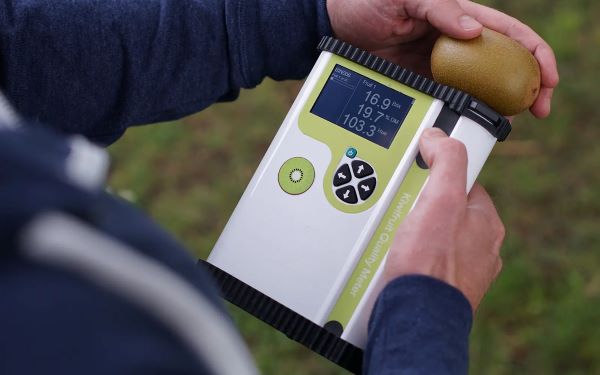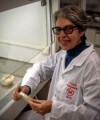Actualidad
Non-Destructive Evaluation of Internal Grape Quality
Visible Near-Infrared Spectroscopy for Assessing Grape Quality Parameters

The grape (Vitis vinifera L., family Vitaceae) is a globally cultivated species valued for its nutritional contributions and economic significance.
Grape quality depends on primary metabolites, such as sugars and acids, along with secondary metabolites like phenolic compounds.
Evolution of Key Parameters
The ripening process of grapes, driven by genetic and biochemical events, leads to transformations that include increased sugar content, pulp pigmentation, accumulation of phenolic substances in the skin, and seed darkening due to higher tannin content. Consequently, the evolution of various indicators during grape maturation is diverse and non-uniform. Monitoring these changes throughout the ripening process is crucial for determining the optimal harvest time.
Spectroscopy: A Simple Evaluation Technique
Recently, the introduction of chemometrics (*) along with spectroscopic techniques has significantly expanded the methods for evaluating internal fruit quality.
A spectroscopic analysis typically requires minimal sample handling, offering advantages such as simplicity, speed, and non-destructiveness compared to traditional physicochemical measurement methods.
Furthermore, traditional methods involve costly chemical reagents; in contrast, spectroscopic analysis does not require laboratory procedures, reducing analysis time and optimizing the process.
Spectroscopic techniques have recently been effectively used for developing quality detection methods for mangoes, avocados, and citrus fruits.
Near-infrared (NIR) spectroscopy has been employed to predict texture parameters and soluble solids content in whole berries.
By providing a holistic quantitative evaluation of grape quality, it eliminates the need for individual indicator measurements, streamlining the process and enhancing the accuracy and reliability of quality predictions. This metric offers a practical and comprehensive means to determine grape maturity stages and optimal harvest times.
Vis-NIR Enables Non-Destructive Prediction of Grape Quality
A recent study employed visible near-infrared (Vis-NIR) spectroscopy combined with chemometrics to predict comprehensive grape quality.
First, Vis-NIR spectral data from the fruits were acquired, and physical quality indicators (color, firmness, and elasticity) and chemical quality indicators (pH, total acidity, soluble solids content, total anthocyanin content, total phenol content, and total tannin content) were analyzed using instruments as reference standards.
This research demonstrates that non-destructive prediction of grape quality can be achieved through a combination of Vis-NIR spectroscopy and chemometric analysis, offering a practical and comprehensive method for determining maturity states and optimal harvest times.
This approach is particularly valuable for the wine industry, facilitating better decision-making and improved quality control.

Felix Instruments: Specialist in NIR Assessment of Various Fruits
(*) Chemometrics is the chemical discipline aimed at extracting information from chemical systems through the statistical and mathematical processing of data from different experimental observations.
Sources
Zhou, X.; Yang, J.; Su, Y.; He, K.; Fang, Y.; Sun, X.; Ju, Y.; Liu, W. (2024). Aggregation and assessment of grape quality parameters with visible-near-infrared spectroscopy: Introducing a novel quantitative index. Postharvest Biology and Technology, 218: 113131.
Wikipedia, Chemometrics
Image
https://www.enocultura.com.br/o-que-determina-a-cor-do-vinho/ Accessed 10/30/2024.












